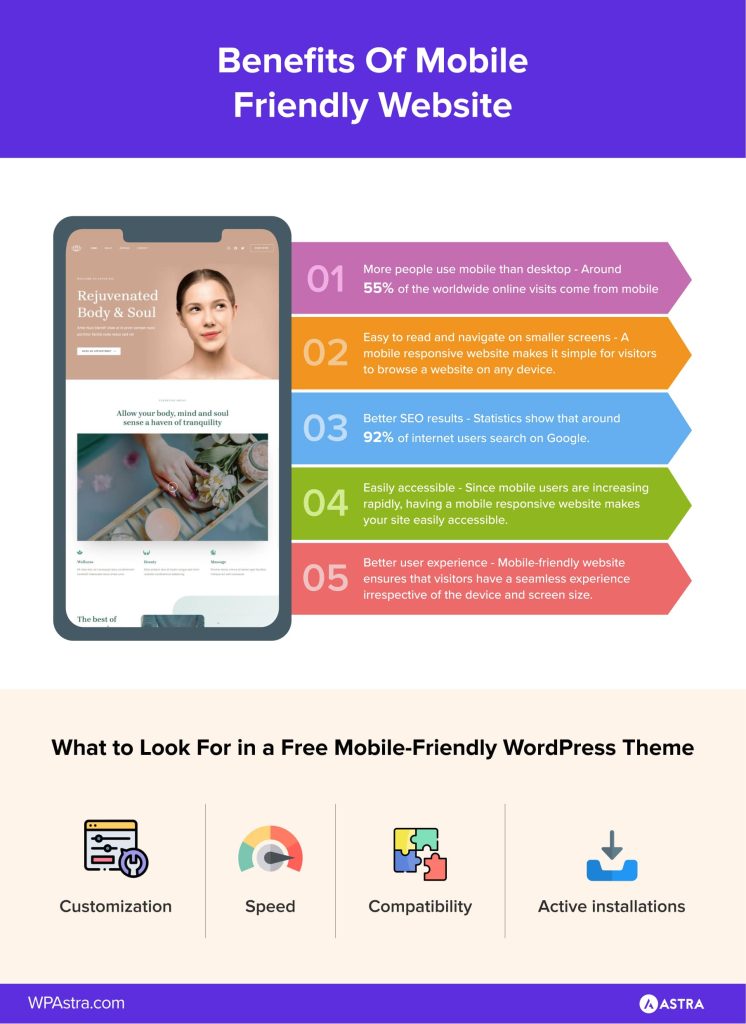Optimize Presence: The Power of Mobile Optimization Unleashed
Optimize Presence: The Power of Mobile Optimization Unleashed
Blog Article

The Ultimate Guide to Mobile Optimization: Strategies for Enhancing Website Performance on Smartphones and Tablets
The strategies for enhancing web site efficiency on mobile systems go beyond mere adaptation; they incorporate a comprehensive approach that involves receptive design, speed optimization, web content approaches, and individual experience improvements. By delving into the details of mobile optimization, businesses can not just meet customer assumptions but additionally stay ahead in an affordable digital landscape.
Importance of Mobile Optimization
Mobile optimization plays a pivotal role in enhancing user experience and driving conversion rates in the ever-evolving digital landscape. With the increasing use of mobile phones and tablets for surfing the net, guaranteeing that sites are maximized for smart phones has ended up being essential for businesses - Mobile Optimization. A mobile-optimized web site not only adapts flawlessly to various screen dimensions yet also lots rapidly, giving users with a smooth and enjoyable searching experience
In today's busy world, individuals anticipate instant accessibility to information on the move. A website that is not optimized for mobile devices dangers shedding potential customers due to reduce loading times or a bad interface. By purchasing mobile optimization, organizations can cater to the demands of their mobile audience, bring about greater engagement and boosted conversions.
Moreover, search engines like Google focus on mobile-friendly websites in their rankings, making mobile optimization necessary for boosting presence and drawing in natural website traffic. Mobile Optimization. Overall, the significance of mobile optimization can not be overstated, as it directly affects customer contentment, conversion prices, and overall business success in the digital realm
Responsive Layout Strategies
Applying receptive style strategies makes certain that internet sites dynamically readjust their layout and web content based upon the individual's gadget screen size, giving a consistent customer experience throughout numerous systems. Among the most common approaches used in responsive design is developing fluid grids that enable material to resize proportionally to the screen dimension. This guarantees that elements on the page preserve their relative spacing and setup, enhancing the seeing experience for customers on different devices.
In addition, utilizing flexible pictures that can scale with the size of the viewport helps protect against pictures from being chopped or distorted on smaller sized screens. CSS media questions play a critical duty in receptive design by enabling designers to use particular designs based upon the device qualities such as display size, height, and orientation. By leveraging media queries, sites can adjust their design and style to match mobile phones, tablets, and desktop computer screens seamlessly.
Incorporating responsive layout techniques not only improves individual experience however also adds to boosted search engine rankings, as internet search engine like Google focus on mobile-friendly sites in their mobile search results. By accepting responsive design, web sites can deal with the varied demands of users accessing material on a range of gadgets, eventually driving interaction and conversions.
Rate and Performance Optimization

One secret technique is optimizing images and multimedia material to minimize data dimensions without compromising top quality. Pressing pictures, leveraging modern-day picture layouts like WebP, and careless packing offscreen images work approaches to accelerate lots times (Mobile Optimization). Moreover, reducing HTTP requests, leveraging web browser caching, and decreasing server action times are important action in boosting performance.
Carrying out a material shipment network (CDN) can likewise considerably increase web site speed by dispersing content across several servers globally, minimizing latency for customers accessing the website from different places. Focusing on important above-the-fold web content and delaying non-essential manuscripts can additionally improve viewed performance. By concentrating on rate and efficiency optimization, websites can provide a smooth and rewarding individual experience on smart phones.
Mobile-Friendly Material Techniques
Mobile-friendly web content strategies involve customizing the presentation of information to suit the smaller sized screens and on-the-go home nature of mobile phone and tablet customers. Furthermore, damaging up material right into much shorter paragraphs and utilizing bullet points can aid boost readability and make it easier for users to consume details rapidly.
Including appealing visuals, such as photos and videos optimized for mobile viewing, can likewise improve the total user experience. These visuals ought to matter, high-quality, and lots swiftly to avoid customers from losing rate of interest. Moreover, integrating interactive elements like quizzes, polls, or studies can increase customer involvement and encourage energetic engagement.
Customer Experience Enhancements
Building on the foundation of mobile-friendly web content strategies, boosting user experience involves enhancing every touchpoint to ensure smooth communication and fulfillment for mobile customers. One critical facet of improving customer experience on mobile gadgets is ensuring fast filling times. click reference Users anticipate sites to pack rapidly on their smartphones and tablets, and any kind of delays can bring about frustration and increased bounce prices. Executing receptive design is one more crucial variable in enhancing customer experience. Responsive design makes official source sure that sites adapt to numerous screen dimensions and resolutions, giving a consistent and easy to use experience across different gadgets.
In addition to speed up and responsive layout, simplifying navigation is vital for a positive customer experience. Clear and instinctive navigating food selections, famous search bars, and purposefully positioned call-to-action buttons can assist individuals quickly discover what they are searching for on a mobile site. Enhancing types for mobile users by reducing the variety of fields and utilizing auto-fill attributes can likewise improve the total individual experience. By focusing on these customer experience improvements, web sites can successfully involve and retain mobile visitors.
Final Thought
Finally, mobile optimization is important for enhancing internet site efficiency on smartphones and tablets. By applying responsive design methods, optimizing rate and efficiency, creating mobile-friendly material, and enhancing individual experience, companies can efficiently get to and engage with their mobile target market. It is vital for internet sites to adapt to the increasing mobile usage fads in order to remain affordable in the digital landscape.
Report this page